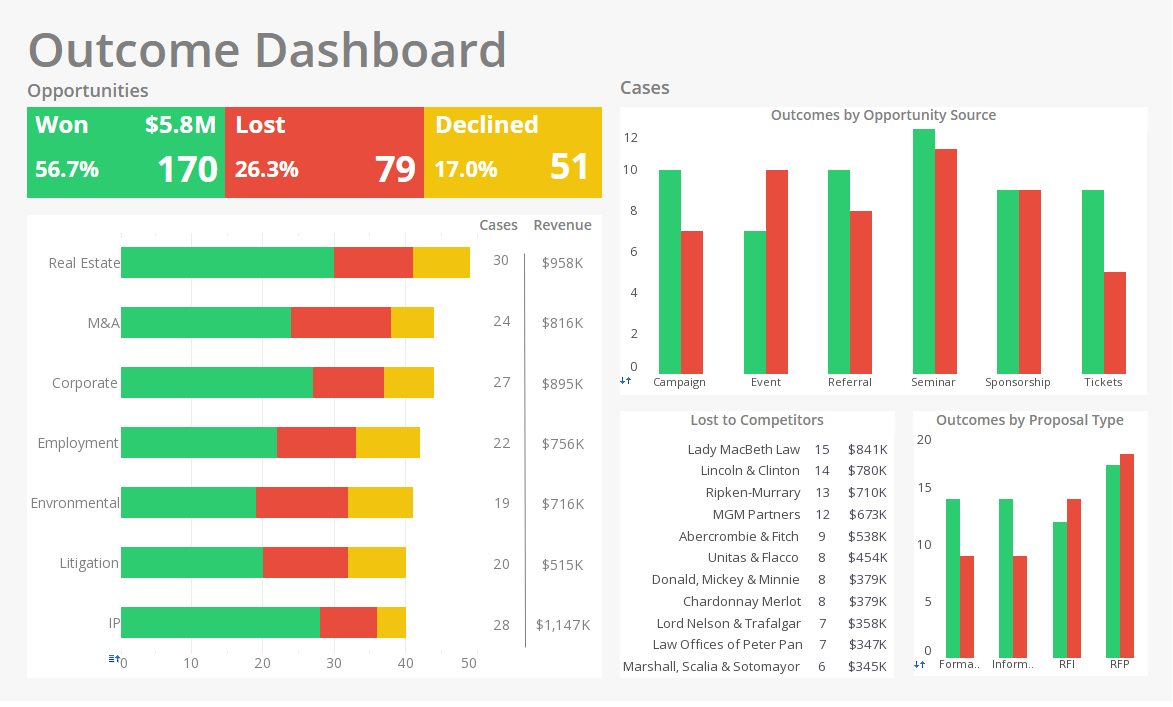Webinar: Seamlessly Bringing Knowledge and Corporate Performance Management Together
This is the continuation of the transcript of a Webinar entitled, "Knowledge Driven Performance Management" hosted by InetSoft. The speaker is Christopher Wren, Principal Consultant at TFI Consulting.
In some organizations, there’s a big different between a client and a customer. In some organizations, it doesn’t make a difference, so using semantic technology in this sort of approach, it’s possible for us to be able to identify, rank, and rate the knowledge assets that are available to Jack and his team by the specific semantic information that we have related to their organization.
So going back, we set up what was the overall linkage between performance management and knowledge assets. We then talked about an operational view of that in terms of what the different groups inside the organization would consist of and what the processes that they would use to link these things.
The next was a more of a linking we would normally call a concept of operations in terms of how the map goes down to individual systems and how they could provide those knowledge assets and the linkage between those assets. Then it’d go down to a very detailed system view in terms of what the operational government’s processes are. What is the data that needs to be fed into a system like this and how does that then complete the performance management cycle?
When you’re implementing a system like this, the people responsible for knowledge management and the people responsible for performance management need a liaison between them because they were established for completely different purposes.
The knowledge management group has been established to obtain and catalog knowledge assets for the purpose of the organization. Corporate performance management has typically been seen as more of a command in control function making sure that everybody’s doing their job and people are getting appropriately rewarded. These two functions are almost never aligned.
Aligning Knowledge Management and Corporate Performance Management
Luckily, it’s actually fairly easy to align them because we’re not really asking, in most cases, the knowledge management group to change anything about what they do. They do have to participate in a number of workshops and sessions to help explain what type of assets they have, why they have those assets, and what they are adding in the way of assets.
The biggest problem we typically run into is not that those two groups existed or are misaligned. Rather, it’s often that one of those groups exists and the other doesn’t. So many organizations have knowledge management but have done a very poor job of corporate performance management.
Another reason is that organizations that have done corporate performance management off haven’t done a good job of knowledge management or is fractured across the different parts of the organization. We’re not actually asking either of those groups to, in any significant way, change what they’re doing, but we do need to get them to sit down together, align some of the activities that they do, and make some changes that need to be made to processes in order to make those work together more seamlessly.
Now, going into the database itself, let’s just describe it as a virtual database because in most cases, tools like the performance soft views tool have its own database and it wants to hold the metrics in and there’s also other knowledge, document management systems.
This database is mostly about managing the links between that information, and in the early days when the early implementations were done, we were linking those two things mostly just through ha set of key words.
Now, we’re moving more into a semantic way of linking them. If you think about the metrics, they really represent, in many ways, a model of the knowledge in your organization. You know you can actually automate a lot more of this cross-linking if you formally model those two things and then resolve the linkages.
Your tools can then do more of this for you in an automated fashion. But that’s kind of a leading edge approach to this and for most organizations. For any reasonable size, it’s not necessary to do it that way yet.
Fostering Collaboration and Integration
As organizations strive to integrate knowledge management and corporate performance management, it becomes increasingly important to foster a culture of collaboration. Encouraging open communication between teams responsible for these functions can help uncover valuable insights and identify opportunities for process improvement. Regular cross-functional meetings and shared objectives can bridge gaps, ensuring that both knowledge assets and performance metrics are leveraged to drive organizational success.
Technology plays a pivotal role in enabling seamless cohesion between knowledge and performance management. Modern platforms offer advanced features such as automated tagging, semantic search, and real-time analytics, which simplify the process of linking knowledge assets to performance indicators. By investing in scalable and interoperable systems, organizations can ensure that information flows freely and securely across departments, supporting informed decision-making at every level.
Leadership commitment is essential for the successful alignment of these management practices. Executives must champion the integration efforts, allocate necessary resources, and set clear expectations for collaboration. By recognizing and rewarding behaviors that support knowledge sharing and performance improvement, leaders can reinforce the value of these initiatives and drive sustained engagement throughout the organization.
Ultimately, the convergence of knowledge management and corporate performance management empowers organizations to adapt quickly to changing market conditions. With a unified approach, businesses can harness collective expertise, monitor progress against strategic goals, and respond proactively to emerging challenges. This holistic perspective not only enhances operational efficiency but also fosters innovation and continuous growth.


